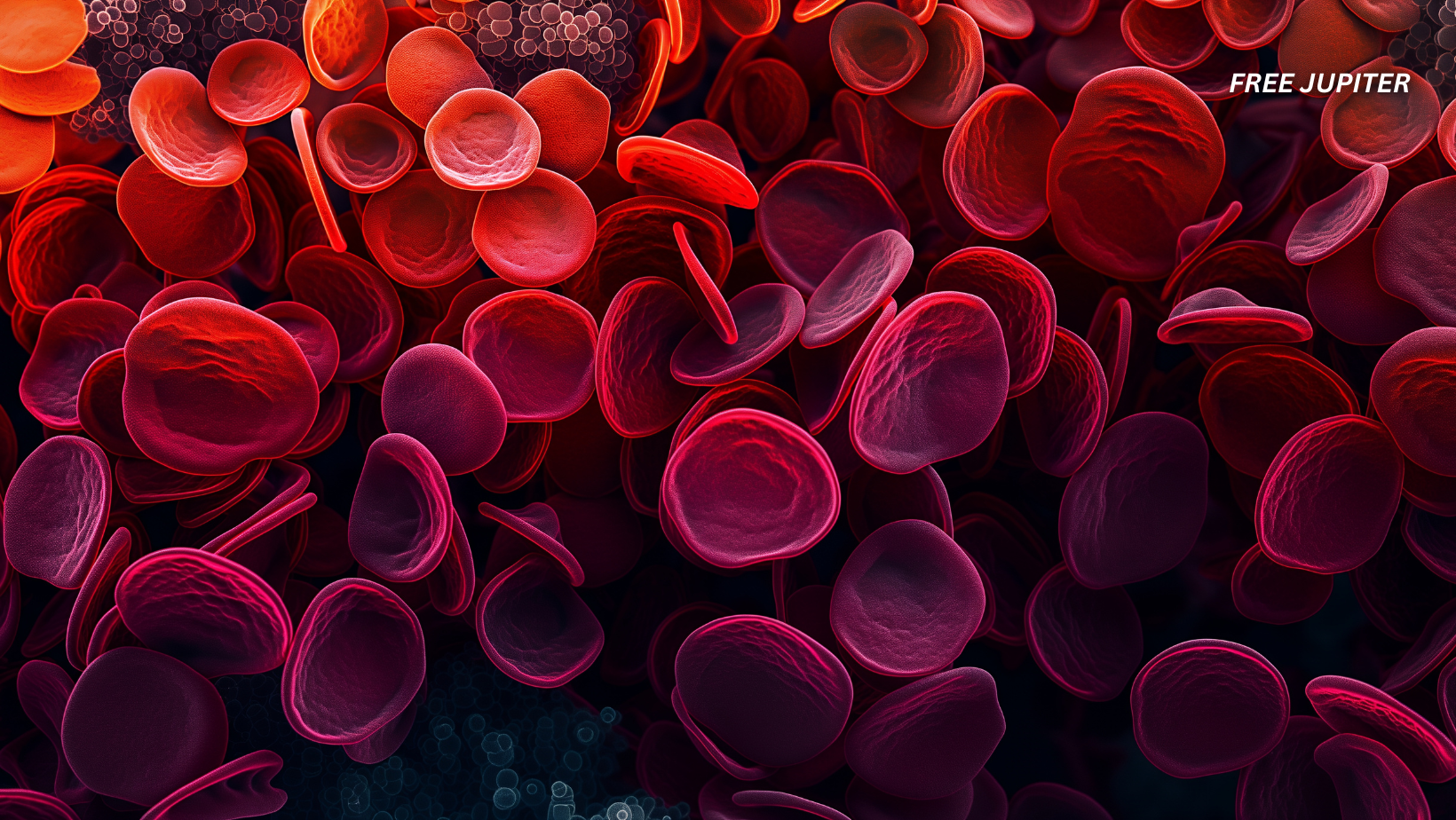Blood clots might not be the most exciting thing to think about during your day, but here’s a reality check: they’re a silent threat that affect hundreds of thousands of people every year—and they can strike with little warning. While they’re not always deadly, they can lead to serious health complications if ignored. So when cardiologists wave a giant red flag and say, “Stop doing this one thing ASAP,” it’s worth listening.
And what is that one thing?
Sitting still for too long.
Yes, something as seemingly harmless as staying parked on the couch for hours, hunched over your laptop, or taking a long flight without standing up could increase your risk of developing dangerous blood clots.
Let’s break down what’s actually going on in your body, and what you can do to keep your blood flowing freely.
What Are Blood Clots, Really?
Think of blood clots as your body’s emergency patch kit. Whenever you scrape your knee or cut your finger, platelets in your blood rush to the scene, forming a clump to stop the bleeding. That’s a blood clot—and it’s incredibly helpful in those moments.
The problem arises when blood clots form inside blood vessels when they aren’t needed. Imagine traffic on a highway suddenly screeching to a halt for no reason—that’s essentially what’s happening when a clot blocks the smooth flow of blood in your arteries or veins. If that clot breaks off and travels, it can lodge in the lungs (pulmonary embolism), brain (stroke), or heart (heart attack), causing life-threatening complications.
Read more: Scientists Just Used CRISPR Gene Editing to Reverse the Root Cause of Down Syndrome
So Why Is Sitting Such a Big Deal?
It turns out that the act of sitting for long stretches—whether during a 12-hour Netflix binge, a cross-country flight, or a regular day at a desk job—can cause blood to pool, especially in the lower legs. When blood isn’t moving, it becomes more likely to clot.
According to Dr. Danielle Belardo, a preventive cardiologist, regular movement encourages healthy blood circulation. “Your muscles help push blood through your veins. When they aren’t being used, blood flow slows down—and that’s where the danger begins,” she explains.
Dr. Mohanakrishnan Sathyamoorthy, another leading cardiologist, backs this up. He adds that the condition known as venous stasis—where blood stays still in one spot too long—is one of the key ingredients in the recipe for clot formation.
And here’s the kicker: you don’t have to be old or already sick to be at risk. Even healthy young adults can experience clotting problems, especially if their lifestyle includes long periods of immobility.
What Else Causes Blood Clots?
While prolonged sitting is a big trigger, it’s not the only one. Here are some other major culprits:
1. Medical Conditions
Certain conditions increase the likelihood of clotting. These include:
- Cancer and chemotherapy
- Heart disease
- Autoimmune disorders
- Genetic clotting disorders (like Factor V Leiden)
2. Injuries or Surgeries
Major surgeries, particularly involving the hips, legs, or abdomen, raise clotting risks. Why? Because recovery often involves long periods of bed rest—aka zero movement.
3. Hormonal Shifts
Women who are pregnant, on birth control pills, or undergoing hormone replacement therapy may be at higher risk due to changes in estrogen levels, which can make blood more prone to clot.
4. Lifestyle Factors
- Smoking
- Obesity
- Dehydration
- Excessive alcohol intake
- A sedentary lifestyle
5. Age
As we age, our veins and arteries become less elastic and our activity levels often drop, which increases risk—even without other underlying issues.
Read more:Going to Bed Without Eating Could Supercharge Your Memory, Scientists Say
Sneaky Symptoms You Shouldn’t Ignore
Clots can be quiet and subtle, but sometimes your body does give you clues. Keep an eye out for the following:
- Swelling in one leg or arm that comes out of nowhere
- Pain or cramping, especially in the calf
- Skin that feels warm to the touch or changes color (red, blue, or pale)
- Sudden shortness of breath or rapid heartbeat
- Sharp chest pain, particularly when breathing deeply
- Coughing up blood
- Feeling faint or lightheaded
These could be signs of a deep vein thrombosis (DVT) or a clot that’s traveled to your lungs or heart. Don’t wait—seek medical attention immediately.
How to Stop Clots Before They Start
Here’s the good news: most clots can be prevented with a few lifestyle tweaks and some self-awareness. Below are the top doctor-approved strategies:
1. Move Regularly (Even a Little Counts)
You don’t need to run marathons. Just break up long periods of stillness with movement:
- Take short walks every hour, even if it’s just around your living room.
- Set a timer to remind yourself to stand up and stretch.
- Flex your feet and wiggle your toes during flights, car rides, or desk work.
- Use a standing desk if available, or try gentle leg exercises while seated.
2. Hydrate Like a Champ
Water isn’t just for quenching thirst—it keeps your blood from getting too thick. Dehydration makes your blood more viscous, which ups the risk of clots forming. Try these tips:
- Aim to drink water consistently throughout the day.
- Carry a reusable bottle to remind yourself to sip.
- Avoid too much caffeine or alcohol, which can dehydrate you.
3. Understand Your Personal Risk Factors
Everyone’s clotting risk is different. You’re more vulnerable if you:
- Have a family history of blood clots
- Smoke or recently quit
- Are pregnant or just had a baby
- Have been hospitalized recently
- Take certain medications
- Have chronic illnesses like diabetes or high blood pressure
Knowing your risk level can help you and your doctor create a plan to stay safe.
4. Wear Compression Socks (If Recommended)
These aren’t just for older adults. Compression stockings gently squeeze your legs, promoting better blood flow and reducing the risk of clot formation—especially during long travel or post-surgery recovery. Ask your doctor if they’re right for you.
5. Stay at a Healthy Weight
Excess weight, especially around the abdomen, puts extra pressure on your veins and slows circulation. Even modest weight loss can significantly reduce your clot risk and improve heart health overall.
6. See Your Doctor for Screening and Prevention
If you’ve had a clot before, or if your doctor thinks you’re at high risk, you may be advised to take blood thinners—medications that help prevent clots. These aren’t for everyone, and they come with their own risks, so always follow professional guidance.
In some cases, non-invasive tests like ultrasounds can help detect a clot early—before it causes harm. So if you have symptoms or concerns, speak up.
Read more: Scientists Found a Bizarre Link Between Body Temperature and Depression
Final Thoughts: The Cure for Clots Isn’t Complicated
Blood clots are serious, but the solutions are refreshingly simple: move more, hydrate often, and don’t ignore the signals your body sends. It’s about working with your body, not against it.
We live in a world where it’s easy to be sedentary—streaming shows, scrolling social media, sitting in long meetings—but your circulatory system doesn’t thrive in stillness. It’s built for movement, flow, and energy.
So the next time you think, “I’ll just sit a little longer,” remember: even a short stroll could make all the difference between a healthy flow and a dangerous clot.
Your heart—and your veins—will thank you.
Featured image: Freepik.
Friendly Note: FreeJupiter.com shares general information for curious minds. Please fact-check all claims and double-check health info with a qualified professional. 🌱










